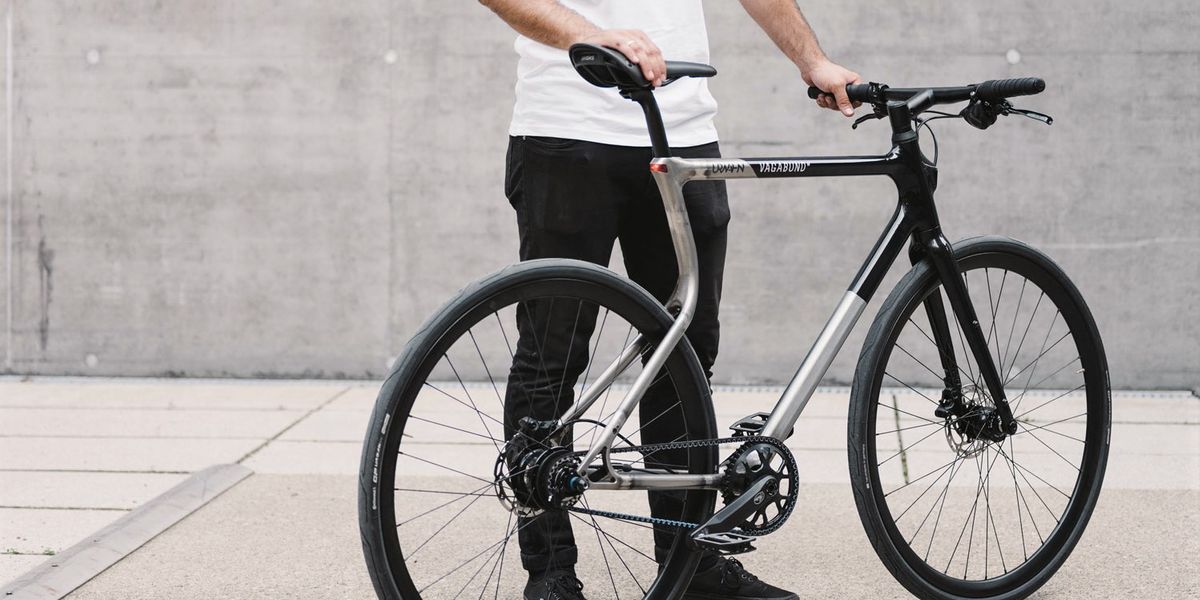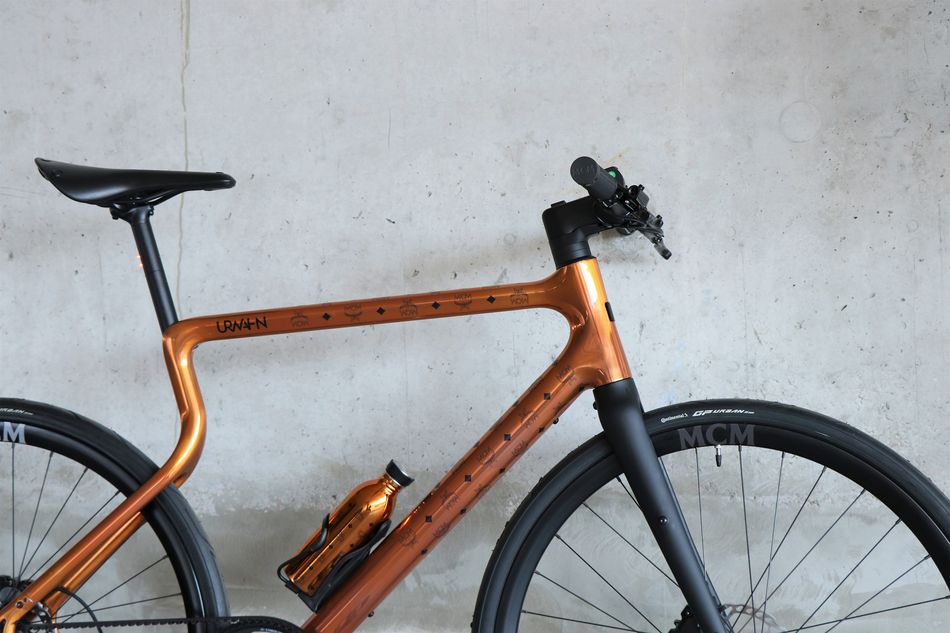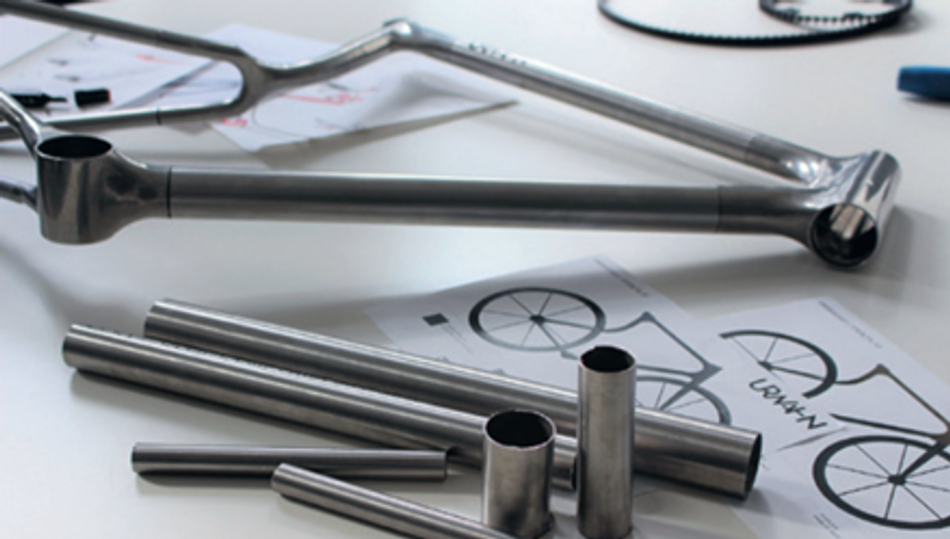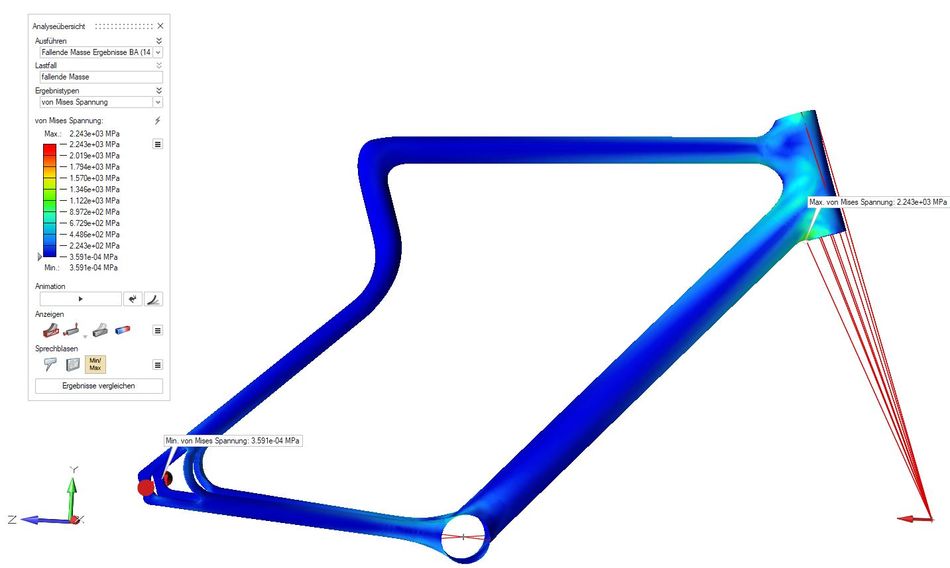Improving 3D-Printed bicycle structures with Integrated Topology Optimization

Image credit: URWAHN Bikes
Article #2 Altair Startup Series. The URWAHN Bikes success story and how the company has benefited from Advanced Computer Integrated Technology.
This is the second article of a 6-part series about the way simulation software can enable startups to innovate with agility and speed. The series includes case studies and deep dives into simulation technology and application.
The quest for the perfect bicycle has about 200 years of success and failures. From the first model developed in 1817 known as the draisine, to more current 3D printed and computer designed two-wheel vehicles, the bicycle is the protagonist of a long history of tradition, exploration, and technological success.
About this long journey, many stories can be told. However, on this occasion, we focus on highlighting the successful case of URWAHN Bikes and its cooperation with Altair Engineering Inc as part of their startup project. The article briefly explores the topics of High-Performance Computing (HPC) and Integrated Topology, covering also URWAHN’s experience in overcoming technical challenges with the aid of simulation technologies.
Getting to Know URWAHN Bikes
URWAHN Bikes is a revolutionary start-up aiming to lead the modern bicycle market in Europe. By taking advantage of the technology innovations that are predominantly in the areas of 3D printing, advanced materials, simulation, and computer integrated technologies, URWAHN Bikes is proving to balance excellent engineering, modern design, and sustainability.

A key point in the company’s added value to the sector is its Made in Germany seal. This signature ensures that any customer/user of URWAHN’s can enjoy a high-quality product that has been approved and tested to ensure product safety. Moreover, the company applies high-tech mechanisms for energy efficiency, material resource management, and CO2 carbon reduction that are partially achieved with the aid of 3D printing, lean manufacturing, and digital tools such as simulation.
Products like its copyright steel frame developed through additive manufacturing or the steel 3D printing components give testimony to the company's commitment to delivering high quality. With the implementation of methods such as topology optimization and the use of simulation software that companies such as Altair offer, the goal of light, safe and attractive bicycles have been achieved since the early stages of the company.
URWAHN Bikes X Altair
URWAHN’s team understands the value of cooperative work. It is why in 2020 they approached Altair, a well-known simulation software provider in the engineering field. Both companies are working together since then to help URWAHN Bikes comply with prescribed products standards (e.g., DIN ISO) and enhance product performance with the aid of simulation environments.
This alliance's initial expected outcome was to find pathways to reduce the bicycle frame weight by bringing also techniques such as 3D printing to the edge of performance to produce low weight high stiffness frame tubes and connecting components. 
To do this, URWAHN participated in Altair’s Startup Program, where access to Altair Inspire products was granted. The team took advantage of the software and performed several load cases to fulfil its structural goals while fulfilling DIN ISO 4210 safety requirements. The preliminary steel framework was put to test using the Inspire topology optimization feature and structural analysis. Three dynamic tests were performed with vertical, horizontal, and alternating forces. Likewise, 2 static tests took place to understand the frame and behavioural conditions under varied forces using different wall thicknesses.
URWAHN engineers pushed forward using optimized steel 3D printed bicycle parts to evaluate the impacts of material distribution along with the entire frame. Thus, looking for points of thick walls where reduction in material weight would be possibly reduced without compromising the entire frame strength and system boundaries like stiffness.

One important feature used by URWAHN engineers in the simulation environment was the so-called integrated topology optimization solver. Using functions such as optimization objectives, stress and displacement constraints, acceleration, gravity, and temperature load conditions, different configurations were simulated so that the components under test could be analysed to look for better system behaviour and weight reduction.
As a result, boundary conditions were pushed to the limits, and undesired physical conditions were detected. The final design was reduced to about 20% of the model’s original weight as well as 15% less wall thickness. The overall simulation time was reduced by about 40% due to the friendly user interface that URWAHN engineering teams were able to access.
Principles of Integrated Topology Optimization
Generative design is a set of technologies that have been on the surge over the past years, helping companies to develop validated and manufacturing-ready designs. Topology optimization has been its poster child, offering performance-driven techniques to create highly efficient, lightweight designs that can be later manufactured with e.g., 3D printing or additive manufacturing.
In the case of Topology Optimization, advances have been seen as early as the 1980s. However, modern topology focuses on offering the possibility to enhance the performance of parts and mechanical systems. The technique consists in determining the most optimal material distribution in the design space to achieve the structural rigidity that an engineer wants for a particular model. At the same time, topology optimization does reduce material quantity and therefore the weight of the component or final product[1]. Usually, 3 cornerstones are touched through structural optimization: shape, size, and topology itself [2]:
In shape, optimization topology is known but curves or surfaces are re-parametrized to e.g., increase strength in friction points or improve the design by arranging surface areas.
In size, optimization geometry is known but measures of design variables are changed to e.g., decrease weight.
In topology optimization, all the design domain is discretized. This means that all the models or systems can be modified so the best possible configuration is achieved.
Issues with topology, such as the encountered by URWAHN bikes, can directly be resolved through a simulation interface. Overall, the technique aims to use finite elements to define the best materials, best shapes, and best configurations to ensure higher physical properties and the improvement of the design.
What kind of computing is needed for topology optimization?
In most cases, when working with low complexity models or individual parts, topology optimization does not require the use of advanced computing. A modern processor together with 32-64 GB RAM would be enough to run optimizations with no significant performance problems. However, when talking about simulation of complex and multi component products, it is important to understand the computational and technical context in which such type of digital modelling of parts and systems will be develop.
Optimization in a broader sense becomes more computational-intense the moment you start doing design exploration, i.e. evaluating various configurations complying to different requirements or when you are training a machine learning (ML) model to evaluate your design.
To resolve the challenges imposed by large data quantity and the operational complexity of high-volume analytical operations, the concept of High-Performance Computing or HPC is applicable. HPC makes it possible to concurrently run several independent simulations, thereby speeding up the development process. In cases where these independent simulations are themselves computationally complex, they can also be accelerated with the application of an appropriate HPC infrastructure.
To make this clear, in contrast to a regular computer, where long operational times are needed to process advanced simulations, the HPC system can accelerate innovation for complex science and engineering problems because it uses large scale processing capabilities to perform several tasks at once. According to IBM for example, HPC solutions can be one million times more powerful than a normal laptop[3].
In the case of a simple topology optimization with Altair Inspire, HPC might not be needed, but other products, i.e. those included in Altair Unlimited Appliance that runs on Oracle Cloud offer the power of HPC. Hence, assuring that the user can get their hands on compute frameworks capable of responding to the most difficult simulation setups.
The Altair Startup Program: Innovation with Simulation, HPC, and AI
If you and your company are aiming to get over constraints such as lack of expertise, costs of operations, and access to enabling technologies, you might have to look for answers outside your circle. Chances are that you have the right ideas, but you don’t know where to start.
For your convenience, the webinar: Accelerating Startup Innovation with Simulation, HPC, and AI, organized by TechCrunch, will look to tackle some of the startup's more common questions, including, best practices, accessibility, and know-how.
Panelists from Altair, Oracle for Startups, and the team of URWAHN Bikes will be sharing their experience with this set of technologies.
Taking place on May the 5th, 2022 at 5 pm CEST (8 am PT, 11 am EDT), the webinar aims to show best practices when implementing complex CAE projects and open a network possibility for startups to connect with global industry tech leaders.
Your experience can be the next successful case in this interesting journey.
How to Enter the Altair Startup Program
In order to qualify for the Altair Startup Program, your company must be:
- Privately held
- Bring in less than $5 million USD in annual revenue
- Have less than $2 million USD in external investment
- Be less than five years old
If you think your startup would benefit from discounted simulation software and free training, you can fill out a form and apply online. The entries occur on a rolling, ongoing basis.
This is the second article of 6-part series about the way simulation software can enable startups to innovate with agility and speed.
Article One demonstrates how access to simulation software assists the next generation of, hardware teams.
Article Three talks about the way simulation software can enable startups to innovate with agility and speed.
Article Four speaks about how simulation is helping startups set the direction of the e-mobility industry.
Article Five demonstrates how startups can accelerate growth and effectively use artificial intelligence for quality assurance, data analytics, and other critical engineering tasks.
Article Six explores how startup programs, including Altair's, can lower that access barrier for entrepreneurs.
References
1. Daicong Da and Julie Yvonnet. (2020). Topology Optimization for Maximizing the Fracture Resistance of Periodic Quasi-Brittle Composite Structures. Journal of Materials. MDPI. Published: 23rd July 2020.
2. Yüksel, O. (2019). An overview of topology optimization methods employed in structural engineering. Department of Mechanical Engineering. Kirklareli University.
3. IBM. (2022). Why High-performance computing is important. https://www.ibm.com/topics/hpc: Accessed: 20.04.2022.

